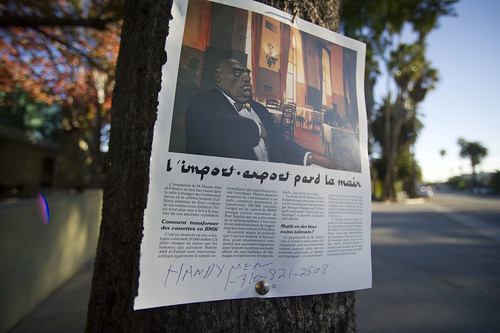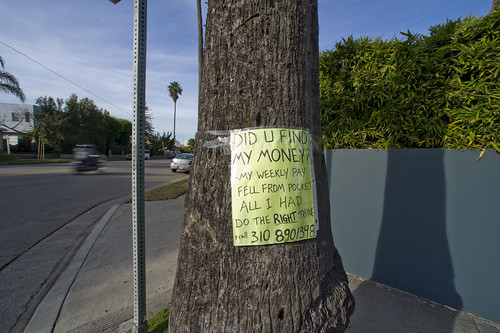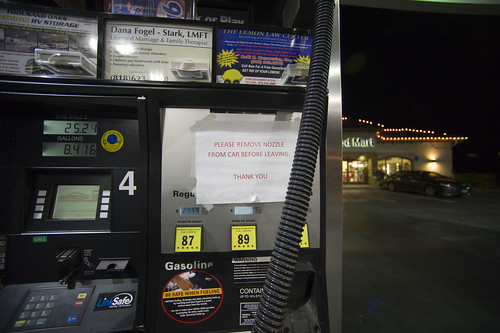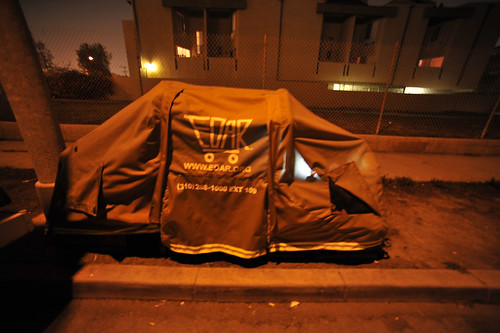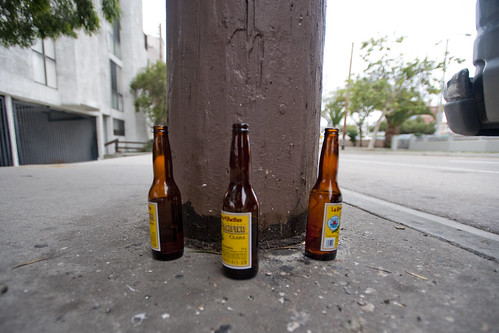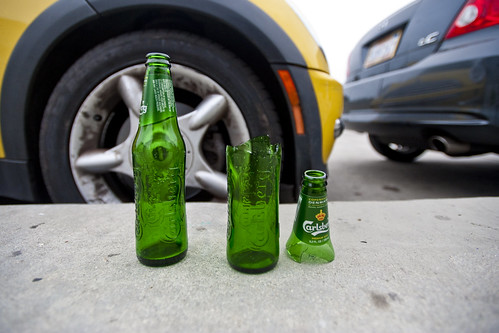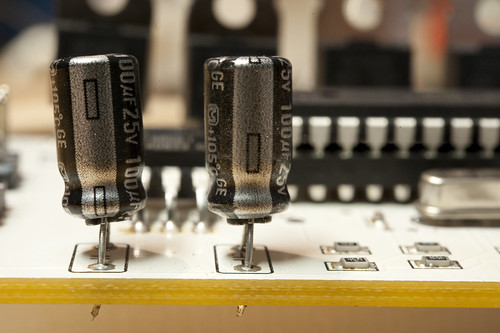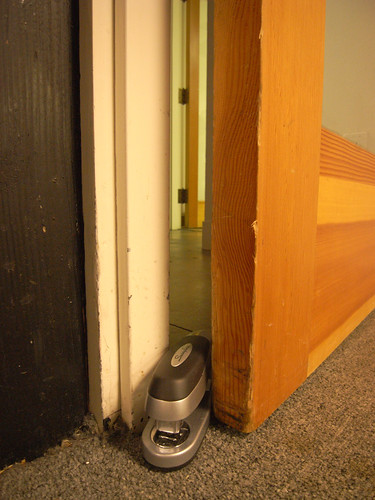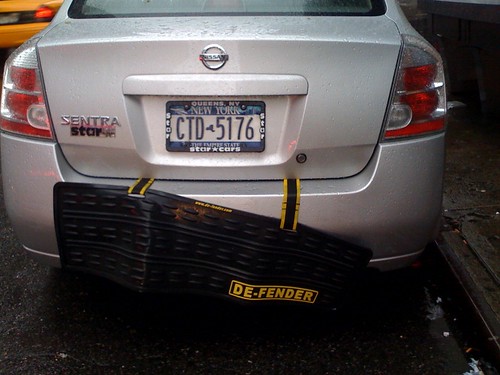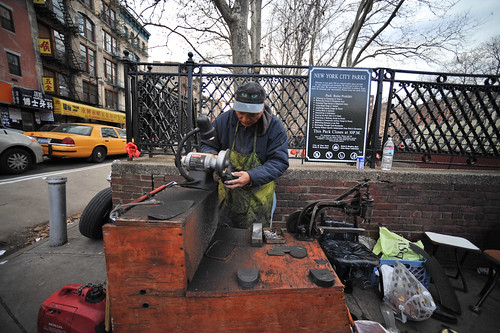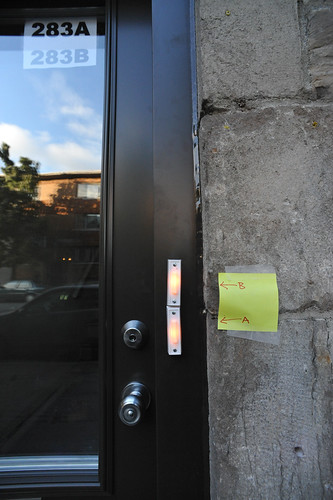Running the blog-the-dog-eared-pages algorithm on Bruce Sterling‘s fantastic “Distraction “, I’ve selected these gems. They’re all intriguing speculations about a near future world to be, complete with some insights and implications that trace the now to the then if you think about how such moments, conversations, objects and designed artifacts could come to be in the year 2050. Particularly at this agitated moment amongst the the various and multiple worlds’ and their financial-political-socio-technocultures.
“, I’ve selected these gems. They’re all intriguing speculations about a near future world to be, complete with some insights and implications that trace the now to the then if you think about how such moments, conversations, objects and designed artifacts could come to be in the year 2050. Particularly at this agitated moment amongst the the various and multiple worlds’ and their financial-political-socio-technocultures.
Oscar took the opportunity to learn how to use a Moderator laptop. He had been given one, and he rightly recognized this gesture as a high tribal honor. The Moderator device had a flexible green shell of plasticized straw. It weighed about as much as a bag of popcorn. And its keyboard, instead of the time-honored QWERTYUIOP, boasted a sleek, sensible, and deeply sinister DHIATENSOR.
Oscar had been assured many times that the venerable QWERTYUIOP keyboard design would never, ever be replaced. Supposedly, this was due to a phenomenon called “technological lock-in.” QWERTYUIOP was a horribly bad design for a keyboard — in fact QWERTYUIOP was deliberately designed to hamper typists — but the effort required to learn it was so crushing that people would never sacrifice it. It was like English spelling, or American standard measurements, or the ludicrous design of toilets; it was very bad, but it was a social fact of nature. QWERTYUIOP’s universality made it impossible for alternatives to arise and spread.
This is a good one. I’ve been fascinated with the ways a particular configuration or design like this — the keyboard layout — becomes a kind of expressive social object. There are all of these deep histories it seems, depending on who you believe, about all standards which are always social-political-historical compromises that lock-in specific meanings. Sometimes you hear that QWERTY was a way to slow typists down so that the mechanical aspects of pre-digital keyboards would not jam the machines in early typesetting and so forth, as Sterling describes in this passage. I’ve also heard that QWERTY was a way to help early typewriter salespeople sell the typewriter because they could easily type out the word “typewriter” only using the top row of letter keys and impress early would-be purchasers. (QWERTYUIOP gives you each letter of “typewriter”, which is something many people to recognize.) In this passage, Sterling is reminding us of this first point — that things set in place, like someone etching their name in drying concrete and, even if flawed, these become “social facts of nature” leaving the inscriptions of all the considerations that will always flow forth from those early debates and conventions and compromises, which become especially resonant when the “lock-in” is for something that spreads widely becoming a universality. p.382
We love those Regulators like brothers and sisters. We got nothing in common with you. Except that…well, we’re Moderators because we use a Moderator network. And the Regulators use a Regulator interface, with Regulator software and Regulator protocols. I don’t think that a newbie creep like you understands just how political a problem that is.
Protocols, interfaces, software, networks yielding to differentiation at the level of social and political factions is a very curious extrapolation. At the same time, it is a kind of embodiment of the politics of protocols as well-expressed in Alexander Galloway’s fascinating two network books Protocol: How Control Exists after Decentralization and
and
The Exploit: A Theory of Networks (also with Eugene Thacker).
(also with Eugene Thacker).
Without the high-flying theory and Deleuzian barnstorming, Sterling captures the reasonable future world in which the world wide network has fractured in this way between Moderators and Regulators for some reason having to do with social and political differences between these two groups. A near future such as this seems reasonable, international standards bodies notwithstanding. Receding back into the recent past of incompatible networks would be an outcome of the collapsed world Sterling depicts in Distraction, where global networks may be seen as creating exploitable linkages between teetering giant centers. For instance, the interconnectedness of financial institutions that allowed them to become too tightly connected in strategic terms — able to trade amongst each other too easily so that the game of hot potato that led us to today’s crisis finally caught everyone with bad potatos in the end — could be something that is regulated and controlled. In other words, if an outcome is that institutions must insulate themselves in some fashion, or they become categorized as to who they can do business with, a result could be different kinds of network protocols optimized for that specific business. Regulated banks use the Regulator network; Moderate banks use the Moderator network. p.335
But this was not the strange part. The strange part was that brand-new nomad manufacturers were vigorously infiltrating this jungle of ancient junk. They were creating new, functional objects that were not commercial detritus — they were sinister mimics of commercial detritus, created through new, noncommercial methods. Where there had once been expensive, glossy petrochemicals, there was now chopped straw and paper. Where there had once been employees, there were jobless fanatics with cheap equipment, complex networks, and all the time in the world. Devices once expensive and now commercially worthless were being slowly and creepily replaced by near-identical devices that were similarly noncommercial, and yet brand-new.
When “DIY” attains to its logical zenith, fake becomes the new real. I actually can’t wait for this to happen. The pinnacle of knowledge circulation in the networked age. How-to, tutorials, maker culture, sharing of knowledge (or maybe just descriptions and step-by-step procedures) all coming together so that people make their own stuff, from new materials that do not have to be tuned for epic scale levels of manufacturing. You need something, make one or two rather than having 100,000 of them made offshore someplace and shipped at great expense and with enormous carbon footprint. Natural experimentation with alternative materials, features, etc. p.329
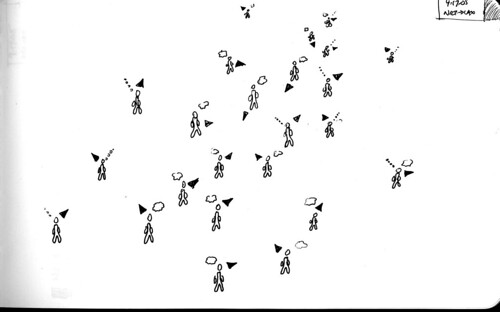
Kevin bought four sets of earclips from a blanket vendor. “Here, put these on.”
“Why?” Greta said.
“Trust me, I know my way around a place like this.”
Oscar pinched the clamp onto his left ear. The device emitted a little wordless burbling hum, the sound a contented three-year-old might make. As long as he moved with the crowd, the little murmur simply sat there at his ear, an oddly reassuring presence, like a child’s make-believe friend. However, if he interfered with the crowd flow — if he somehow failed to take a cue — the earcuff grew querulous. Stand in the way long enough, and it would bawl.
Somewhere a system was mapping out the flow of people, and controlling them with these gentle hints. After a few moments Oscar simply forgot about the little murmurs; he was still aware of them, but not consciously. The nonverbal nagging was so childishly insistent that accomodating it became second nature. Soon the four of them were moving to avoid the crowds, well before any approaching crowds could actually appear. Everyone was wearing the earcuffs, so computation was arranging human beings like a breeze blowing butterflies.
The fairground was densely packed with people, but the crowd was unnaturally fluid. All the snack-food stands had short, brisk lines. The toilets were never crowded. Children never got lost.
Just a fascinating extrapolation into the near future of a number of ideas, such as a kind of flash mob concept, where a crowd is optimized to itself, allowing for smooth flows and transfers — a meta surveillance and control system that does not have the nasty baggage that such things normally. Ground traffic control system that helps you get from “A” to “B” in an optimal way, whatever “A” or “B” might be. This is a concept expressed here that is quite intriguing to me, such as strategies for exploring especially urban space, like the analog Near Future Laboratory project, “Drift Deck” and other psychogeography and cartography explorations. p.326-327
There was a long uneasy silence. Then Griego burtst out in a fury. “Don’t get all high-and-mighty with me, Mr. Third-in-His-Class. You think it’s easy running corporate R&D? It was just fine, as long as the guy didn’t have anything. Jesus, nobody ever thought a goddamn sugar engine would work. The goddamn thing is a giant germ in a box! We build cars up here, we don’t build giant germs! Then they pull this crazy stunt and..well, it just makes our life impossible! We’re a classic, metal-bending industry! We have interlocking directorates all throughout the structure, raw materials, fuel, spare parts, the dealerships…We can’t get into the face of our fuel suppliers telling them that we’re replacing them with sugar water! We own our fuel suppliers! It’d be like sawing off our own foot!”
“I understand about interlocking directorates and mutual stock ownership, Ron. I was sitting right next to you in business school, remember? Cut to the chase — what about the battery?”
“Batteries have the highest profit margin of any automobile component. We were making money there. You can’t make real money anywhere else in our business. The Koreans are building auto bodies out of straw and paper! We can’t support an industry when cars are cheaper than grocery carts! What are we gonna tell our unions? This is a great American tradition at stake here! The car defines America: the assembly line, suburbs, drive-ins, hot rods, teenage sex, everything that makes America great! We can’t turn ourselves inside out because some big-brained creep has bult an engine out of bug guts! There wouldn’t be anything left of us! The guy is a menace to society! He had to be stopped.”
“Thank you for that, Ron. Now we’re getting somewhere. So tell me this — why didn’t you just pull his damn funding?”
“If only it were that simple! We’re required by federal fiat to invest in basic R&D. It was part of our federal bailout deal. We’re supposed to have trade protection, and we’re supposed to catch our breath, and jump a generation ahead of our foreign competitors. But if we jump a generation of the damn Koreans, our industry will vanish entirely. People will make cars the way they make pop-up toast. Proles will build cars out of bio-scrap, and compost them in the backyard. We’ll all be doomed.”
So you’re telling me that you’ve achieved a tremendous scientific R&D success, but as a collateral effect, it will eliminate your industry.”
“Yeah. That’s it. Exactly. And I’m sorry, but we just can’t face that. We have stockholders to worry about, we have a labor force. We don’t want to end up like the computer people did. Jesus, there’s no sense to that. It’s total madness, it’s demented. We’d be cutting our own throats.”
Well, this is very much like the collapse of the automotive industry in the US, clearly. I also like this dig at corporate R&D. This idea that things discovered that could turn into something that is to the larger good would be hidden away if it would overturn the existing order. R&D in this way is ultimately conservative. I’m not sure I believe in R&D, for these reasons and others, but that’s a longer post. p.295-297

“But the economy’s out-of-control. Money just doesn’t need human beings anymore. Most of us only get in the way.”
“Well, money isn’t everything, but just try living without it.”
Kevin shrugged. “People lived before money was invented. Money’s not a law of nature. Money’s a medium. You can live without money, if you replace it with the right kind of computation. The proles know that. They’ve tried a million weird stunts to get by, roadblocks, shakedowns, smuggling, scrap metal, road shows…Heaven knows they never had much to work with. But the proles are almost there now. You know how reputation servers work, right?”
“Of course I know about them, but I also know they dont really work.”
“I used to live off reputation servers. Let’s say you’re in the Regulators — they’re a mob that’s very big around here. You show up at a Regulator camp with a trust rep in the high nineties, people will make it their business to look after you. Because they know for a fact that you’re a good guy to have around. You’re polite, you dont rob stuff, they can trust you with their kids, their cars, whatever they got. You’re a certifiable good neighbor. You always pitch in. You always do people favors. You never sell out the gang. It’s a network gift economy.”
“It’s gangster socialism. It’s a nutty scheme, it’s unrealistic. And its fragile. You can always bribe people to boost your ratings, and then money breaks into your little pie-in-the-sky setup. Then you’re right back where you started.
“It can work all right. The problems is that the organized-crime feds are on to the proles, so they netwar their systems and deliberately break them down. They prefer the proles chaotic, because they’re a threat to the status quo. Living without money is just not the American way. But most of Africa lives outside the money economy now — they’re all eating leaf protein out of Dutch machines. Polynesia is like that now. In Europe they’ve got guaranteed annual incomes, they’ve got zero-work people in their Parliaments. Gift networks have always been big in Japan. Russians still think property is theft — those poor guys could never make a money economy work..”
I love this idea of reputation servers — a possible near future for today’s social networks, friend followers, etc. Somehow participation in today’s networks yields a new index of sorts — your trust ranking or something like this. A nice substitute for today’s “credit rating” systems, which are ridiculously opaque, operating on algorithms we who are rated can only guess about. Besides, in the near future, when the role of banks will have possibly whithered to a collapsed prune of their former selves, we may in fact circulate and leverage financial activities within networks of trust that are more peer-to-peer, like this Susu financial practices that is a cornerstone of various expat communities. p.256-257 (See also http://www.theworld.org/node/24945
Continue reading Dog Eared "Distraction"





